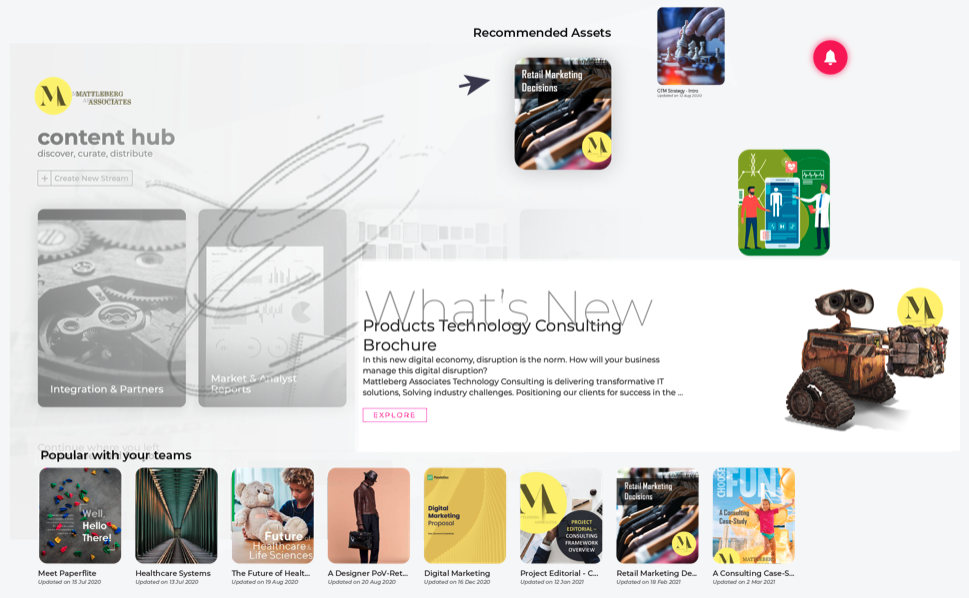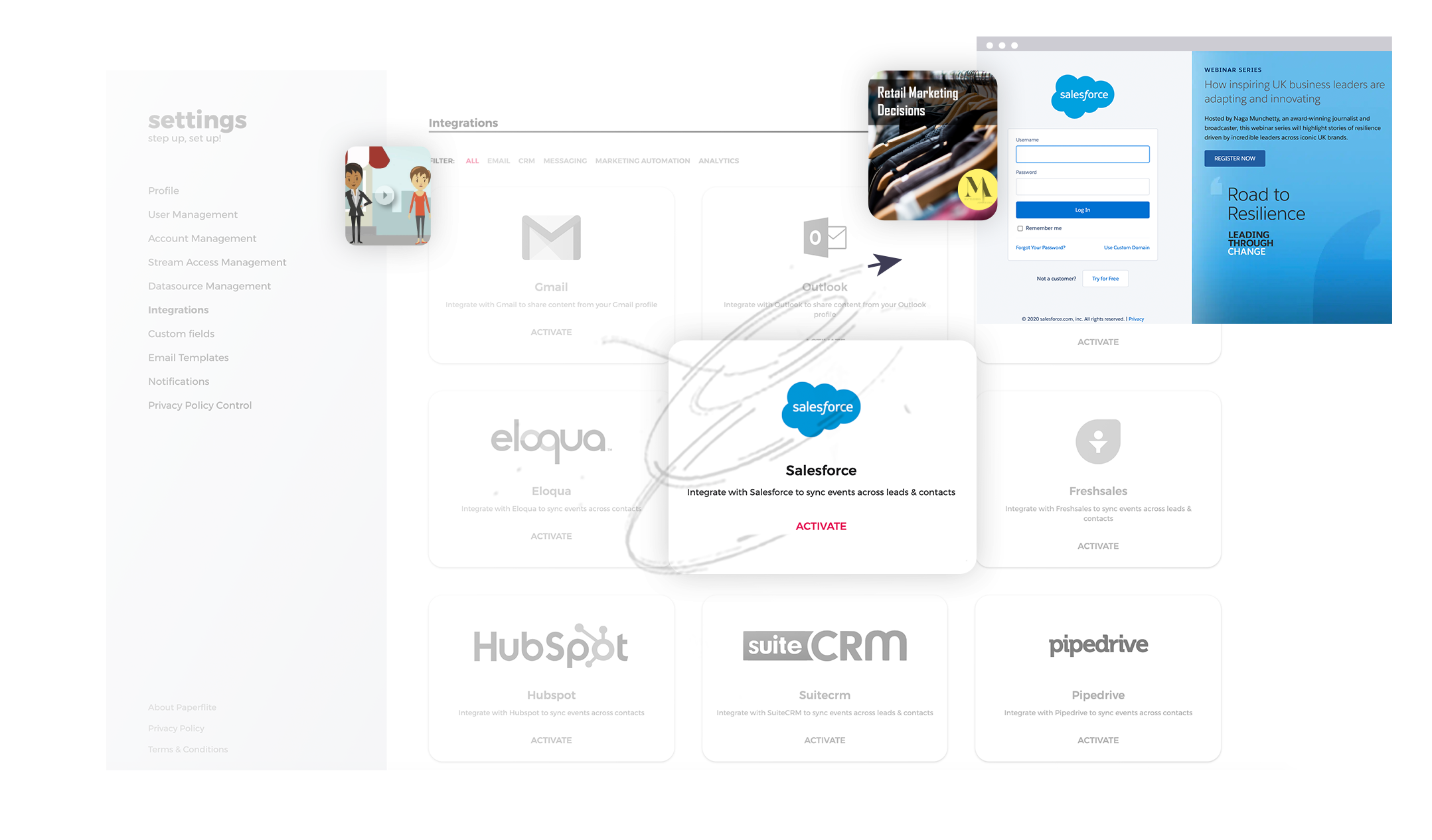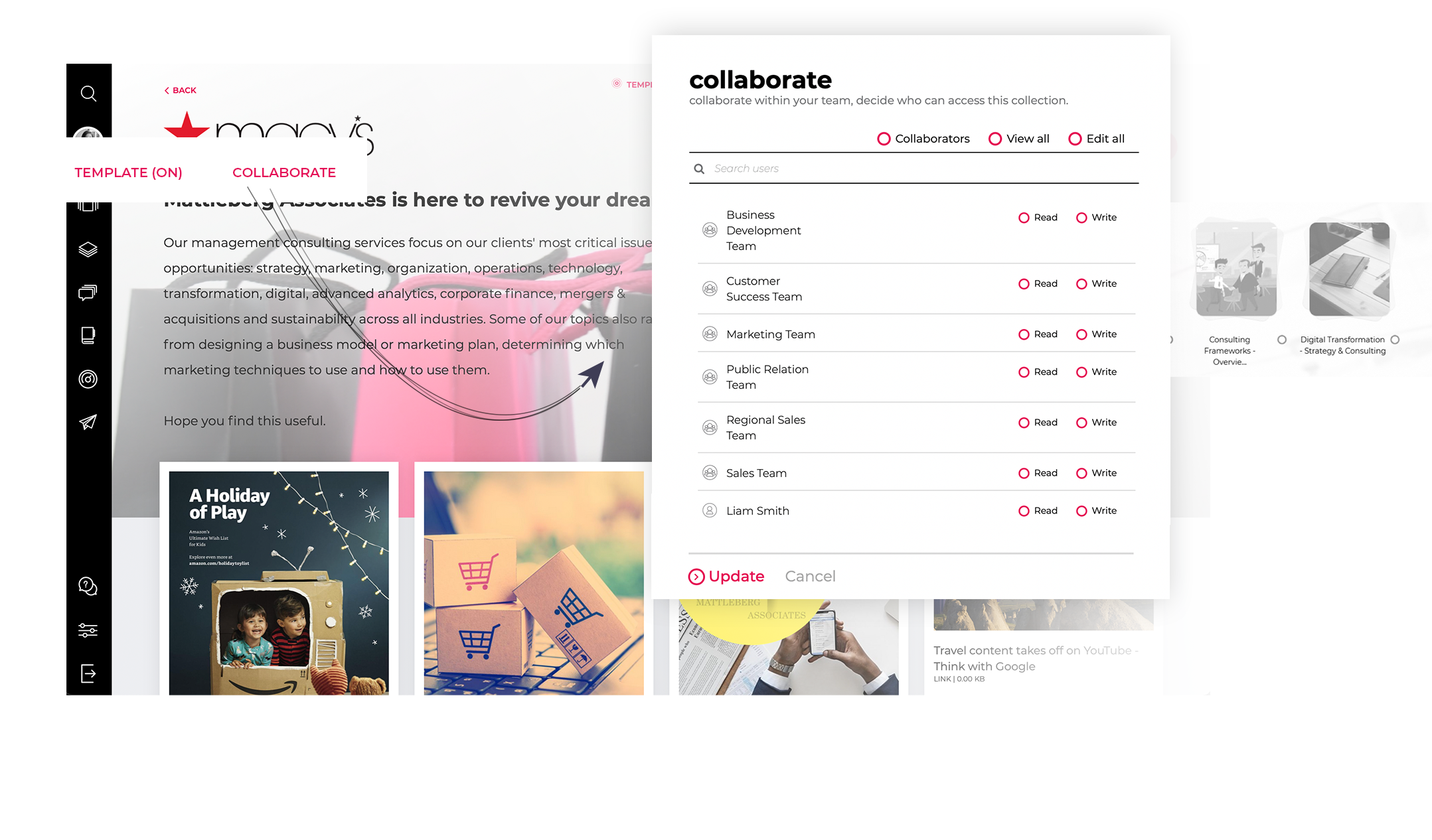Agile Revenue Enablement: The Key to Driving Business Success
Agile Revenue Enablement: adapting to changing market conditions and customer needs, enabling organizations to achieve their revenue goals faster and more efficiently
Agile Revenue Enablement is a methodology that aligns sales and marketing teams to improve the revenue generation process. It focuses on adapting to changing market conditions and customer needs, enabling organizations to achieve their revenue goals faster and more efficiently.
Agile Revenue Enablement works by breaking down silos between sales and marketing teams and creating a collaborative approach. It involves continuous improvement and adaptation, allowing organizations to quickly respond to changes in the market.
Benefits of Agile Revenue Enablement include increased revenue growth, improved sales and marketing alignment, faster go-to-market times, and better customer experience.
Understanding Agile Revenue Enablement
Agile Revenue Enablement (ARE) is an innovative approach to sales and marketing that combines the principles of Agile methodology with revenue enablement best practices. ARE is designed to help businesses achieve revenue growth by providing a collaborative, data-driven approach to sales and marketing that promotes continuous improvement and adaptation.
At its core, ARE is just like revenue enablement about aligning sales and marketing teams to work together more effectively. Traditionally, sales and marketing teams have been siloed, with little communication or collaboration between them. This has led to inefficiencies and missed opportunities, as well as a lack of clarity around shared goals and objectives.
ARE helps to break down these silos by providing a framework for collaboration and communication between sales and marketing teams. By working together, teams can identify areas for improvement and adapt their strategies to meet the changing needs of customers and the market.
One of the key benefits of ARE is its focus on data and analytics. By using data to inform decision-making, teams can make more informed decisions about how to allocate resources, target customers, and measure success.
Implementing Agile Revenue Enablement
Implementing ARE requires a collaborative approach that involves both sales and marketing teams. Here are the steps to implementing ARE:
Define goals and objectives: The first step is to define the goals and objectives of the ARE program. This includes identifying the key metrics that will be used to measure success.
Assess current processes: The next step is to assess current sales and marketing processes to identify areas for improvement.
Develop a roadmap: Based on the assessment, develop a roadmap that outlines the steps required to implement ARE.
Assign roles and responsibilities: Assign roles and responsibilities to team members to ensure everyone knows what they need to do and when.
Implement the roadmap: Implement the roadmap, making sure to monitor progress and adjust as necessary.
Importantly, implementing ARE is an ongoing process that requires continuous improvement and adaptation. It's essential to stay flexible and make changes as needed to ensure the program remains effective.
Importance of a collaborative approach:
Implementing Agile Revenue Enablement requires a collaborative approach between sales, marketing, and other departments involved in revenue generation. This ensures that all teams are aligned and working towards the same goals.
By involving all stakeholders in the process, there is greater buy-in and accountability, which leads to more successful outcomes.
Best practices for implementing Agile Revenue Enablement:
Start small: Implementing Agile Revenue Enablement can be overwhelming, so it's important to start with a few key initiatives that can be executed effectively.
Communicate regularly: Communication is key to ensuring that all teams are aligned and aware of progress and challenges. Regular check-ins and status updates can help keep everyone on track.
Measure and analyze: It's important to measure the impact of Agile Revenue Enablement initiatives and analyze the results to make data-driven decisions for future initiatives.
Common challenges and how to overcome them:
Resistance to change: Change can be difficult, and some team members may be resistant to new processes or technology. It's important to communicate the benefits of Agile Revenue Enablement and involve team members in the process to ensure buy-in.
Lack of resources: Implementing Agile Revenue Enablement can require additional resources, such as technology or personnel. It's important to assess the available resources and prioritize initiatives accordingly.
Agile Revenue Enablement Tools and Technologies
Agile Revenue Enablement requires the use of technology to support the implementation and execution of initiatives.
Here are some examples of tools and technologies that can support Agile Revenue Enablement:
Sales enablement platforms: These platforms provide sales teams with the content, training, and tools they need to sell more effectively. They can also provide insights into the effectiveness of content and sales strategies.
Get Granular Information About Every Content Being Sent
Marketing automation platforms: These platforms can automate marketing tasks such as lead nurturing, email marketing, and social media management. They can also provide insights into the effectiveness of marketing campaigns.
Customer relationship management (CRM) software: CRMs can provide a centralized database for customer and prospect data, as well as insights into sales pipeline and performance. There are vast options of CRM systems companies can choose from depending on their specific needs and budgets; for instance, SMEs can opt for a CRM system for small businesses.
Agile Revenue Enablement Tools and Technologies
Agile Revenue Enablement requires the use of advanced tools and technologies to ensure its effectiveness. Here are some ways tools and technologies can support Agile Revenue Enablement and how Paperflite's platform can help:
Automate processes: By automating content management and tracking, businesses can streamline their sales process and ensure that sales teams have the right content at the right time.
Consolidate data: By centralizing data, businesses can gain a comprehensive view of their sales process and identify areas for improvement.
Improve collaboration: By enhancing collaboration, businesses can ensure that all stakeholders are working towards a common goal.
Paperflite's platform provides a suite of features that support Agile Revenue Enablement efforts. These features include automated content management, advanced analytics, and seamless integrations with popular CRM and marketing automation tools.

By automating content management, businesses can create, organize, and distribute content to sales teams quickly and efficiently, streamlining the sales process and promoting agility. With advanced analytics, sales teams can gain insights into how customers are engaging with content, identify areas for improvement, and optimize the sales process accordingly.
Paperflite's seamless integrations with popular CRM and marketing automation tools enable businesses to reduce manual tasks and streamline the revenue generation process, ensuring maximum efficiency and effectiveness. By utilizing these features, businesses can achieve their revenue enablement goals quickly and effectively, driving sustainable growth in a rapidly evolving market.

By utilizing these tools and technologies, businesses can enhance their revenue enablement efforts and drive sustainable growth.
Overview of Agile Revenue Enablement tools and technologies:
There are a variety of Agile Revenue Enablement tools and technologies available on the market. Some examples include:
CRM Software - Customer Relationship Management (CRM) software is a crucial tool for Agile Revenue Enablement. It allows organizations to centralize data, manage customer interactions, and automate various tasks.
Sales Enablement Platforms - Sales Enablement Platforms provide a variety of tools that can help sales teams be more effective in their roles. These tools can include content management, analytics, and collaboration tools.
Marketing Automation Platforms - Marketing Automation Platforms can help streamline the marketing process and provide insights into customer behavior. By automating tasks such as email campaigns and social media management, teams can focus on higher-level tasks.
How these tools and technologies support Agile Revenue Enablement:
These tools and technologies support Agile Revenue Enablement in several ways, such as:
- Automation - Automating tasks frees up sales and marketing teams to focus on higher-level tasks, such as strategic planning and customer relationship building.
- Centralization - By centralizing data, teams can have a better understanding of customer behavior and interactions, making it easier to align sales and marketing efforts.
- Collaboration - Collaboration tools enable sales and marketing teams to work together more effectively, share knowledge and insights, and improve communication.
Agile Revenue Enablement Best Practices
To achieve maximum success with Agile Revenue Enablement, it's important to maintain a culture of continuous improvement and adaptation. In this section, we'll discuss the best practices for maintaining Agile Revenue Enablement momentum, and the key metrics and KPIs to track.
It is a crucial aspect of modern business operations and involves continuous improvement and adaptation to changing market conditions.
Here are some best practices for Agile Revenue Enablement:
Continuous Training: Sales teams need to be trained regularly to stay up-to-date with the latest industry trends, products, and customer needs. Regular training sessions can help salespeople develop new skills and techniques, stay motivated, and improve their performance.
Collaborative Sales Enablement: Collaboration between sales, marketing, and other departments is essential for Agile Revenue Enablement. The sales team needs to work closely with marketing to align messaging, content, and campaigns to drive revenue growth.

Data-Driven Insights: Sales teams need to have access to relevant and accurate data to make informed decisions. Collecting and analyzing data from various sources, such as CRM systems and social media platforms, can help sales teams identify new opportunities and tailor their messaging to the needs of their customers.
Sales Process Optimization: Optimizing the sales process is essential for Agile Revenue Enablement. Sales teams need to have a standardized process in place that outlines the steps to be taken during each stage of the sales cycle. Regularly reviewing and refining the process can help sales teams stay agile and adapt to changing market conditions.
Technology Adoption: Adopting the right technology can help sales teams streamline their operations, automate routine tasks, and focus on selling. Sales enablement platforms, CRM systems, and data analytics tools are just a few examples of the technology that can help sales teams be more agile and effective.
Importance of Continuous Improvement and Adaptation
Agile Revenue Enablement is not a one-and-done process. It's an ongoing effort that requires constant attention and iteration. The best way to ensure that Agile Revenue Enablement is successful is to have a culture of continuous improvement and adaptation.
One way to achieve this is to establish regular check-ins and retrospectives with your team. During these meetings, you can review what worked well and what didn't in your last sprint, and use that information to make adjustments for the next one. Encourage your team to share their thoughts and ideas, and make it clear that feedback is always welcome.
Another important aspect of continuous improvement is being open to new ideas and approaches. Agile Revenue Enablement is all about experimentation and learning from failures, so it's important to create an environment where team members feel comfortable taking risks and trying new things.
Maintaining Agile Revenue Enablement Momentum
One of the biggest challenges in implementing Agile Revenue Enablement is maintaining momentum. It's easy to start off strong, but over time, other priorities can take over, and the focus on Agile Revenue Enablement can slip.
To maintain momentum, it's important to keep the goals and objectives of Agile Revenue Enablement front and center. Set regular check-ins and progress reviews to keep everyone on track, and celebrate successes along the way. Make sure everyone understands how their individual contributions are helping to achieve the team's overall goals.
Another way to maintain momentum is to keep the focus on the customer. Customer needs and preferences are constantly evolving, so it's important to stay in tune with these changes and adapt your approach as necessary.
Encourage your team to stay in touch with customers and gather feedback regularly, and use this information to inform your Agile Revenue Enablement strategy.
Agile Revenue Enablement Metrics and KPIs
To measure the success of Agile Revenue Enablement, it's important to track the right metrics and KPIs. Here are a few key metrics to consider:
Sales Velocity: This measures how quickly you are moving leads through the sales pipeline. A high sales velocity indicates that your team is efficient at converting leads into customers.
Conversion Rates: This measures the percentage of leads that convert into customers. By tracking conversion rates, you can identify areas where your team could improve.
Customer Lifetime Value: This measures the total amount of revenue a customer generates over the course of their relationship with your company. By tracking customer lifetime value, you can identify which customers are the most valuable to your business.
Time to Revenue: This measures how quickly you are able to generate revenue from new customers. A shorter time to revenue indicates that your team is efficient at onboarding new customers.
By tracking these and other relevant metrics, you can assess the effectiveness of your Agile Revenue Enablement strategy and make adjustments as necessary.
Conclusion
Agile Revenue Enablement is a powerful approach to driving business success, particularly in today's rapidly changing business environment. By focusing on collaboration, experimentation, and continuous improvement, you can create a culture of agility and adaptability that will help your organization stay ahead of the competition.
We've explored the definition of Agile Revenue Enablement, the benefits of this approach, and the steps to implementing it successfully. We've also discussed the importance of maintaining momentum and tracking the right metrics and KPIs.
By following the best practices outlined in this article, you can build a strong Revenue Enablement strategy that will help your business thrive in the years to come.
